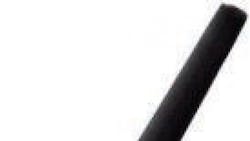Determine Auto Paints' Impact On Car Antennas
TODAY'S CARS include an increasing amount of electronics-based featuresmany of which rely on wireless communications. Examples include cellular communications, GPS antennas, remote keyless entry (RKE), and satellite-radio services. Each wireless service demands the incorporation of additional antennas into the vehicular platform. Recently, experimental results were provided for the effects of two common automotive paint chemistries on the performance of vehicular antennas. Electrostatic primers also were considered in this project, which was conducted by Brendan D. Pell, Wayne S.T. Rowe, Kamran Ghorbani, Edin Sulic, and Sabu John from Australia's RMIT University.
The exterior designs of today's automotive antennas, such as shark-fin antennas, are usually painted to blend in with the car's exterior. To investigate the various kinds of paint used in the automotive industry, the researchers studied both polyurethane and water-based paint types over wide, multi-service frequency ranges. They began by studying the metallic inclusions in the paint itself, which led them to discover the high-density packing of those inclusions. To examine the effect of the various paints on an antenna, they then used a rectangular microstrip patch and bowtie slot antenna. A linearly polarized, edge-fed square microstrip patch antenna was designed and fabricated for the narrowband investigation, which focused on the L1-band GPS frequency of 1.575 GHz.
Identical material in the same thickness was chosen for the superstrates. A number of equally sized superstrates were cut and painted with the various paints. Two were set aside as controls. The input impedance of both the narrowband and wideband antennas was recorded as every sample was placed on each antenna in turn. The changes in gain and radiation pattern, which were caused by the addition of the painted substrates, were evaluated in an anechoic chamber. The metallic paints appeared to behave as dielectrics, despite the densely packed metallic inclusions. For their part, the electrostatic primers may cause a reduction in an antenna's gain, due to their partially conductive nature. See "Experimental Study of the Effect of Modern Automotive Paints on Vehicular Antennas," IEEE Transactions On Antennas And Propagation, Feb. 2011, p. 434.
